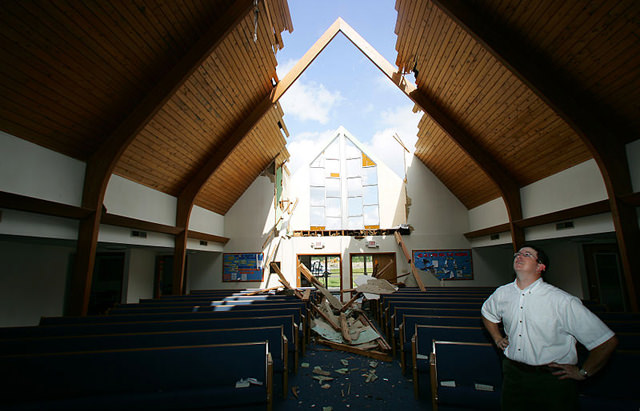
Your roof and home undergo numerous amounts of stresses from the forces of a hurricane. As recently as 2005, roofing contractors in College Station, TX saw the lingering effects of Hurricane Rita which ripped up roofs, fences, and land across the Brazos Valley. Many homeowners saw roof damage characteristic with strong storms; their roofs were lifted upwards and back, away from the roof. The pattern of damage is consistent with the changing direction of the winds during the storm. In a few cases several homes required entire sections of their roof to be replaced which begged the question on how to improve roof performance during such extreme events.
Methodology
In a study by Gränne and Björk in 2000, researchers measure the wind load resistance of a roofing system with heat welded joints between the roofing felt and outer metal flashing. Researchers tested four different roofing materials based on thickness, reinforcement material, protection coating, coating thickness, and type of sheet metal used.
Using the Nordic standard for large –scale test of roofing systems, the study carried out tests in a wind tunnel. A positive pressure was applied in the lower box of testing structure (simulating a living area) and a negative pressure applied to the roof area to simulate wind forces. All testing was done with the Alwetron testing machine at room temperature.
Study Results
One of the roofing materials was also tested with two different welding techniques. Research found evidence that the strength of the roofing system joints can be altered by the welding process used to assemble the roofing system.
Gränne and Björk specifically noted that joints made with hot air welding were significantly weaker than those made with an open flame. Researchers believe this was due to the welding patterns used during the adhering process of the roof joints. The unusual patters were found to be a result of uneven pressure applied to the roofing materials while welding occurred. That uneven pressure was ultimately identified in the welder’s own proficiency. The welder used his feet to apply pressure to the roofing joint instead of applying pressure evenly across the joint, as done with best practice.
Relationship to Your Roof
When important joints in your roofing system are not constructed properly, the roof will undergo both a peeling back force (lifted upwards and back) and a shearing force. Improper pressure during critical build phases, like the welding of the joint can cause structural integrity issues and could even crack outer protective PVC coatings.
Additionally, local municipalities have their own rules and regulations regarding the use of specific building techniques. College Station roofers should always use the best practice during installation to protect homeowners from future issues. Proper welding will help a roof stay in place during a hurricane by reducing the lifting force and will prevent injury from flying debris by reducing the shearing force.
Schulte Roofing is a College Station roofing contractor with over 100 years of experience. Schulte Roofing has been providing College Station, TX and the rest of the Brazos Valley with professional roofing services and proper welding techniques for over 18 years. For more information about the sturdiest roofs for hurricane season, contact Schulte Roofing today.
Reference
Gränne, F., Björk, F. 2000. Wind Load Resistance Tests of Heat-Welded Joints Between Roofing Felt and Sheet Metal Flashings. XIth International Waterproofing and Roofing Congress
